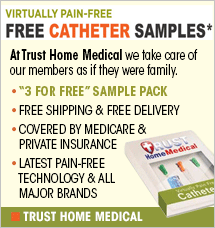
 At dinner last evening, my husband asked me, “Did I take my pills yet?” He pulled his little silver case out of his pocket, and sure enough, he had already taken them. Any senior’s daily dance with medications is only a snapshot of a larger societal issue. We make mistakes, and worse, news reports frequently cite the dreadful track record for medication errors by hospitals, pharmacies, and others in the system.
At dinner last evening, my husband asked me, “Did I take my pills yet?” He pulled his little silver case out of his pocket, and sure enough, he had already taken them. Any senior’s daily dance with medications is only a snapshot of a larger societal issue. We make mistakes, and worse, news reports frequently cite the dreadful track record for medication errors by hospitals, pharmacies, and others in the system.
According to a 2016 article in the journal Community Hospital Internal Medicine Perspectives, adverse drug events (ADE) happen during 3.5 million office visits and 1 million emergency department visits annually.
“Preventable medication errors impact more than 7 million patients and cost almost $21 billion annually across all care settings,” reported the authors, “About 30% of hospitalized patients have at least one discrepancy on discharge medicine reconciliation. Medication errors and ADEs are an underreported burden that adversely affects patients, providers, and the economy.”
Enough to make one reach for the jar of leeches the next time you become ill, isn’t it? The Food and Drug Administration (FDA) notes the major causes of errors:
- Poor communication in a multi-layered system.
- Ambiguous product names, directions, or use of medical abbreviations not commonly understood.
- Poor procedures or techniques.
- Patient misuse because of misunderstanding product use directions.
Across the prescribing chain, mistakes happen – in the initial packaging, repackaging, dispensing, administering, and even in the wrong use by a patient.
A federal agency, known as the Center for Drug Evaluation and Research (CDER) is, according to the FDA, charged with preventing medication errors before a drug’s approval. They also evaluate, monitor, and act on reported medication errors, educating health professionals, and sharing information with those invested in preventing errors.
The bottom line is that errors can happen at any link in the chain – during a pharmaceutical trial before the release of a new medication, or in your bathroom when your partner hands you tonight’s medication.
Technology May Be a Game-Changer
Two uses of technology may reduce medications errors and provide designer drugs for individuals. Writing for the American Enterprise Institute’s “AEIdeas,” Roger Bate suggested that improved packaging may reduce errors.
“My criticisms of individual pill distribution is not with the pharmacist. All humans make mistakes, but the U.S. approach treats the patient as largely passive in the whole process.” He continued, “With professional packaging and branding, patients are more likely to see if the medicine is not what they were told it should be by the prescribing physician.”
Bate suggested that blister packs reduce the chance a pharmacist will provide the wrong amount of medicine, and make it difficult for illegal operators to substitute bogus products. With blister packs, there is also a reduction in contamination risk. Bate noted that Amazon recently announced it was jumping into the pharmaceutical pool, selling medicine in the blister packs popular elsewhere in the world.
My question is, will a drone deliver my eye drops? I was reticent to move to mail order, fearing what would happen to the drops on a postal truck in a humid Ohio River Valley summer. Now I will worry that the drone will drop my drops on my roof, necessitating a ladder adventure that surely isn’t good for my health.
Seriously, with the 800-lb gorilla presence of Amazon in our economy, this could be a game-changer. A recent US News report outlined how DNA-specific medication can help doctors treat a patient’s condition based on changes in their genetic make up. The MyCode Community Health Initiative, based at Geisinger Health Systems in Pennsylvania, catalogs the DNA of 150,000 volunteers. If genetic changes are found in conditions associated with a patient’s particular DNA mix, patients are notified.
The source used the example of a 58-year-old Pennsylvania homemaker who had her DNA tested in April 2016. The My Code Community Health Initiative notified her that she was a carrier of a gene that might cause breast and ovarian cancer. The patient had her ovaries removed, and doctors found a golf-ball sized tumor. She had been asymptomatic.
While this illustration is only anecdotal, the point is made that technology offers space-age options that we could not have imagined as children. Designer drugs, made especially for us, can reduce the margin of error, but we still have to take the right pill at the right time.
For further information see https://www.go60.us/health/item/2430-keeping-yourself-safe-from-medical-errors discusses ways to prevent personal medication errors.
Amy McVay Abbott is a newly retired healthcare executive who writes about health and wellness issues. Visit her at www.amyabbottwrites.com



























































